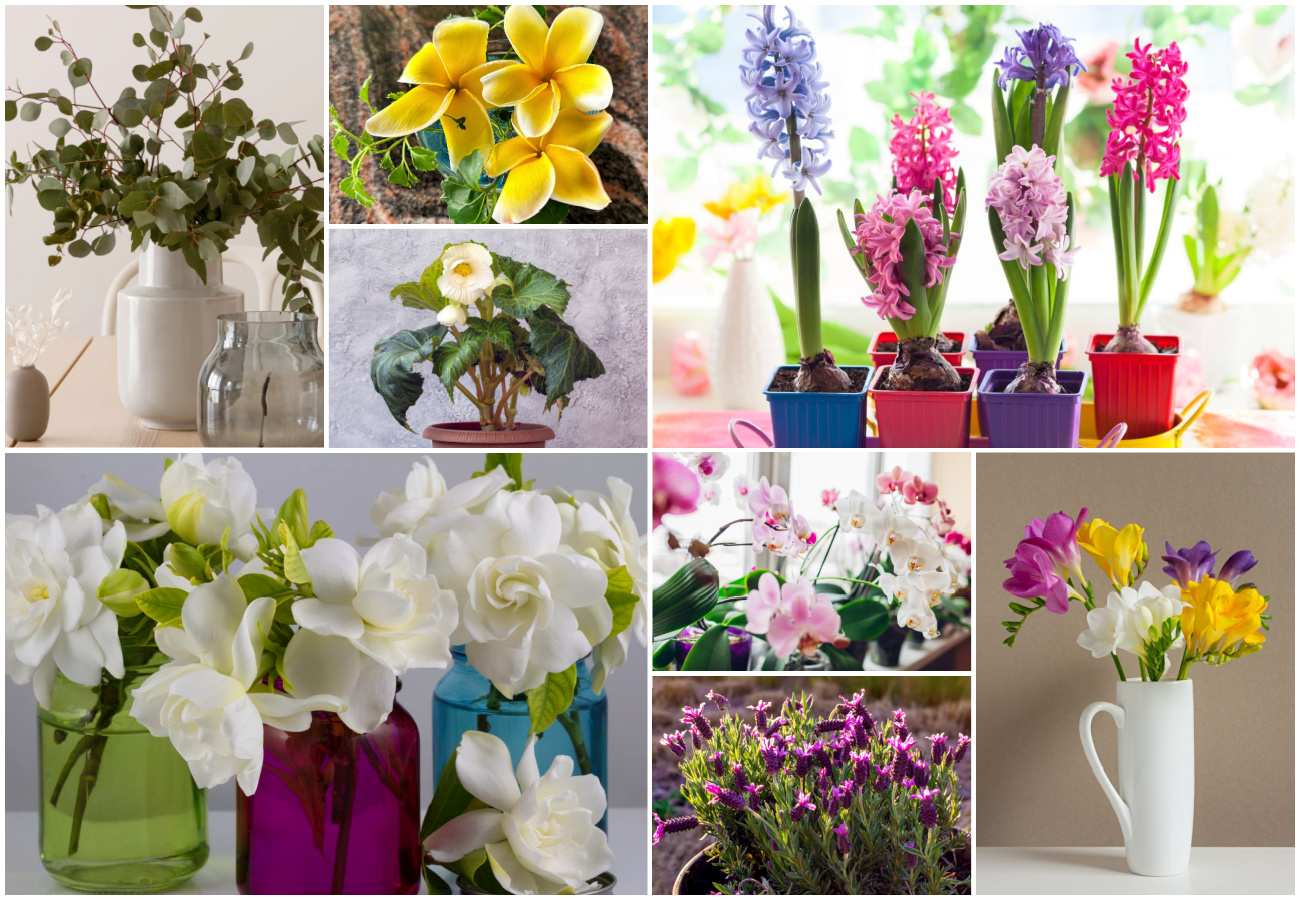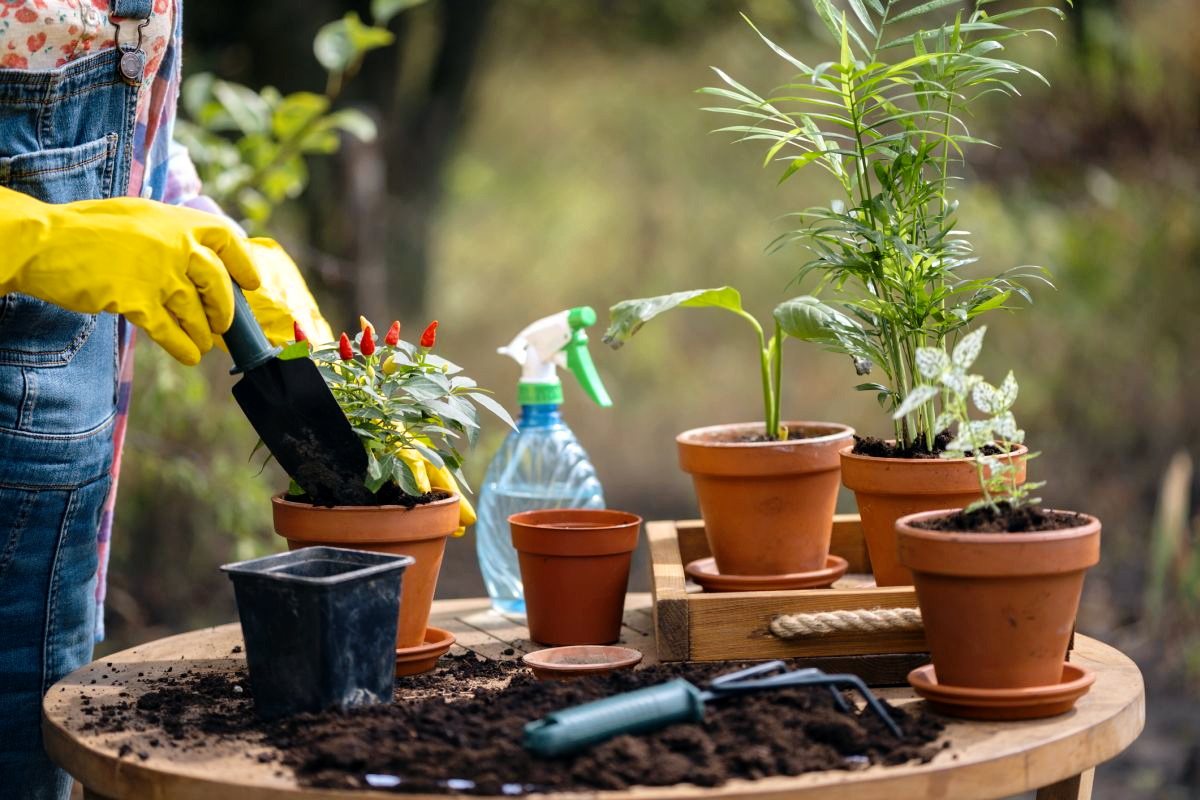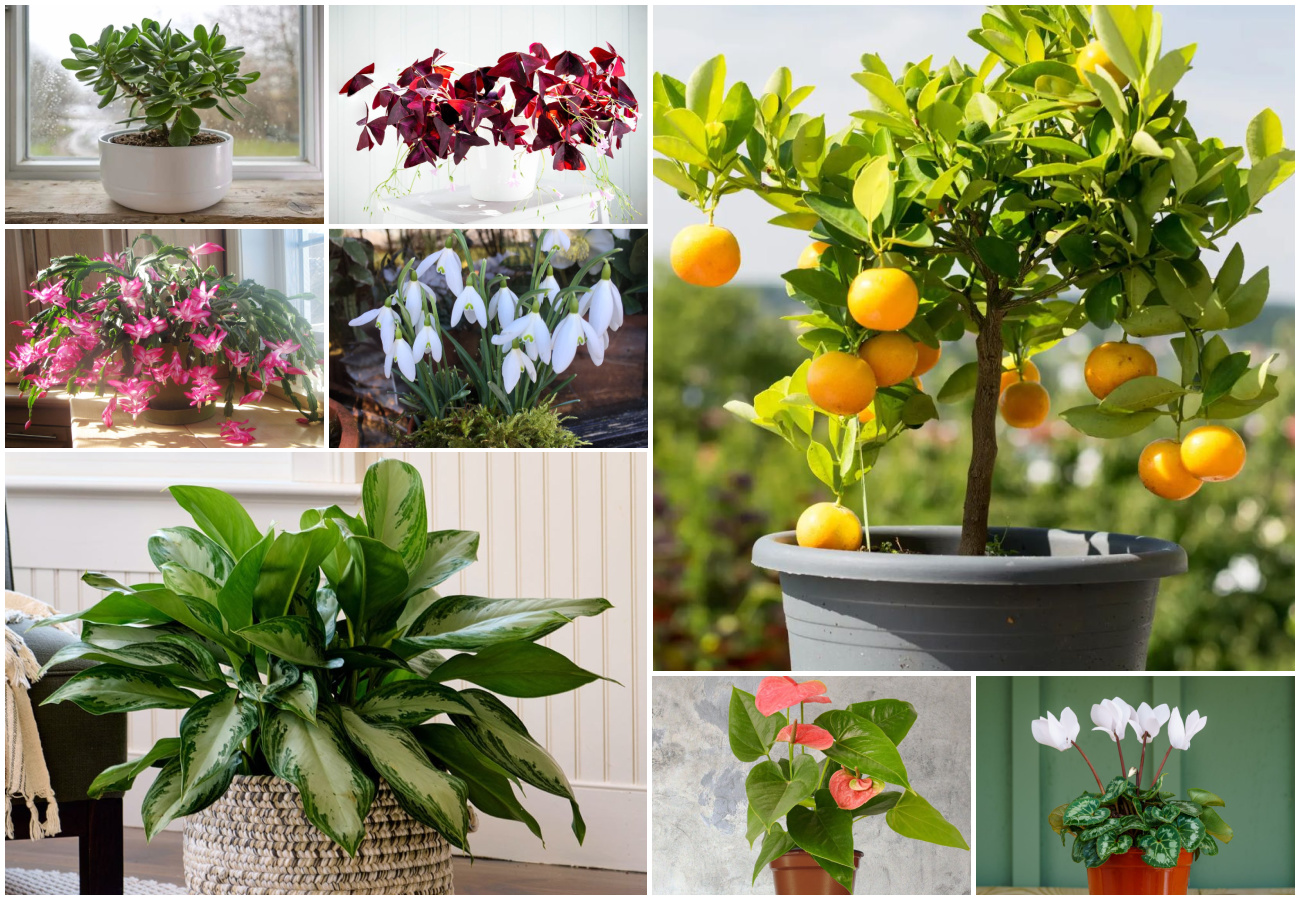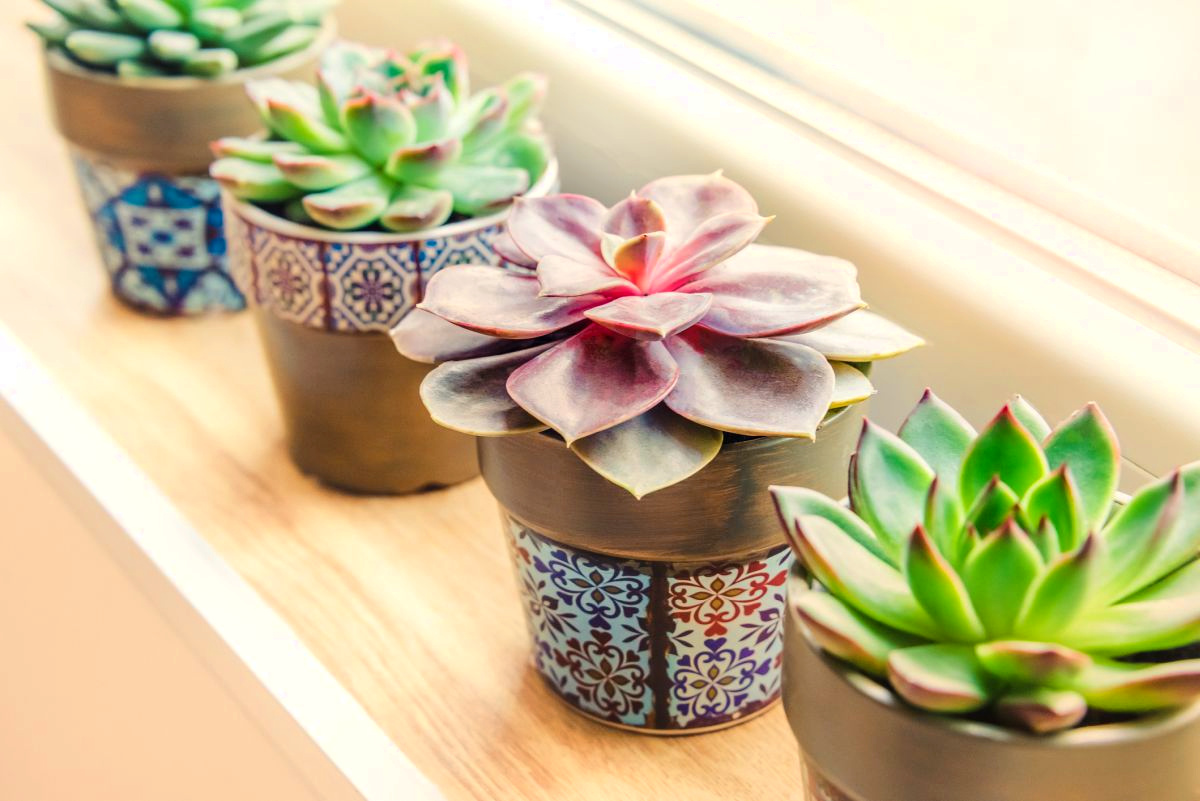Oxalis triangularis (purple shamrock) is a low-growing perennial with deep purple, trifoliate leaves. In its native South America, it is found growing on forest floors and in woodland clearings. It grows well as a houseplant or in ornamental borders.
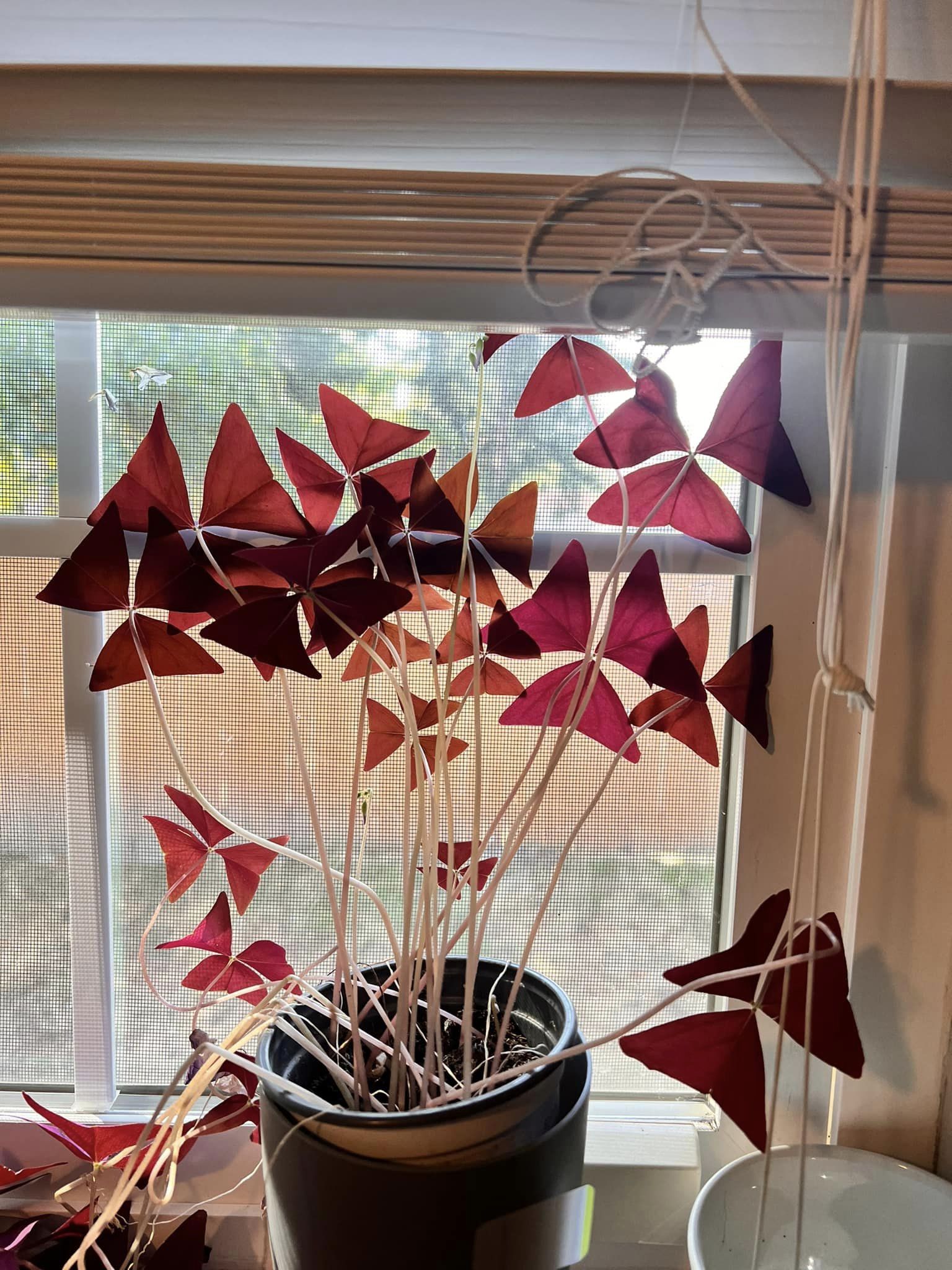
Each leaf consists of three, palmately arranged leaflets that radiate from a single point. The triangular leaves resemble species in the Trifolium (clover) genus, giving the plant its common name, false shamrock. The small flowers are white, pale pink, or lilac.
Oxalis triangularis foliage opens and closes in response to light levels. The leaves unfold in daylight and close at night or in dull weather.
| Scientific Name | Oxalis triangularis |
| Common Names | Purple Shamrock, False Shamrock, Love Plant |
| Plant Type | Deciduous, perennial |
| Family | Oxalidaceae |
| Genus | Oxalis |
| Origin | South America |
| Size | 1’ tall, 1-2’ wide |
| USDA Hardiness Zones | 8-11 |
| Propagation Methods | Division, seed |
| Climate | Temperate to subtropical |
| Soil Type | Well-draining, loamy |
| Sun Exposure | Partial sun |
Care for Oxalis Triangularis

Planting
Purple shamrock plants form corms—bulb-like storage organs that facilitate new growth. Plant corms in the spring or fall. Space corms 1 inch apart from one other and to a depth of 1 to 2 inches. Water well to settle the soil. Plant in containers or directly in the garden bed.
Light
Oxalis triangularis requires 4 to 6 hours of bright light each day. Indoors, place next to an east- or south-facing window and use a sheer curtain to protect from intense sun. Outdoors, grow in a location that receives morning sun and afternoon shade.
Purple shamrock is sensitive to high temperatures (above 80 °F) and may close its leaves in response to harsh sun. Low light conditions will cause slow and leggy growth.
Tip: Rotate indoor plants periodically to provide even sun exposure.
Soil
The soil should be moist and well-draining. Combine two parts regular potting mix with one part perlite and one part leaf mold or coconut coir. Outdoors, incorporate organic matter into heavy clay or sandy soils before planting.
Water
Keep the soil moist but avoid overly wet conditions. Water when the top inch of soil is dry. Ensure the container has good drainage and allow excess water to drain away. The plant will wilt if it is too dry but will come back quickly once hydrated. Water less frequently through the cooler months and not at all during periods of dormancy.
Humidity and Temperature
Most typical indoor spaces provide suitable humidity and temperature levels for Oxalis triangularis. Maintain an optimal range of 60 °F to 75 °F and protect from drafts or extreme temperature fluctuations.
Fertilization
Feed every 3 to 4 weeks during the growing period with a balanced, liquid houseplant fertilizer. For outdoor plants, apply a slow-release fertilizer at the beginning of the growing season.
Flowering
In its native habitat, Oxalis triangularis typically flowers from fall through spring. In temperate regions or when grown as a houseplant, the flowering period may be in the spring and summer or throughout the year.
- Provide plenty of bright indirect light.
- Maintain cooler temperatures (60 °F to 75 °F).
- Keep soil consistently moist.
- Feed with a balanced liquid fertilizer through the growing season.
Pruning
Purple shamrock plants require minimal pruning. Remove dead or damaged leaves to maintain a tidy appearance and deadhead spent flowers. Cut back all dead foliage when the plant enters dormancy.
Overwintering
In its native South America, Oxalis triangularis exhibits summer dormancy when the temperatures are high. As a houseplant or in temperate climates, it is likely to be winter dormant in response to the cold. Dormancy may only occur every few years. As the plant enters dormancy, the foliage will wither and eventually die.
During Dormancy:
- Suspend watering. Allow the soil to dry completely.
- Cut back dead foliage to soil level.
- Place the container in a cool, shaded location.
Awakening After Dormancy:
- Remove soil from the pot and separate corms.
- Fill the container with fresh soil and replant corms. This is a good time to propagate corms by division.
- Water well and place in bright indirect light. New growth should emerge in 10 to 14 days.
Oxalis Triangularis Varieties
There are numerous cultivars of purple shamrock, offering differences in foliage and flower color.
- Oxalis triangularis ‘Atropurpurea’: Black-purple edges with lighter purple center.
- Oxalis triangularis ‘Ebony Allure’: Deep purple, almost black foliage.
- Oxalis triangularis ‘Fanny’: Deep green foliage with white flowers. An alternative to purple Oxalis.
- Oxalis triangularis ‘Mijke’: Burgundy-purple foliage with white flowers.
- Oxalis triangularis ‘Sanne’: Ashy, dark green leaves with purple undersides.
Varieties of Oxalis
Many other species within the Oxalis genus are also referred to as shamrock plants.
- Oxalis glabra (Tall Wood Sorrel): Bright green, narrow, triangulate leaves.
- Oxalis gracilis (Slender Wood Sorrel): Green, linear, triangulate leaves with apricot flowers.
- Oxalis tetraphylla (Four-leaved Wood Sorrel): 4 green leaflets with deep green centers. Sometimes referred to as the ‘lucky clover’.
- Oxalis violacea (Purple Wood Sorrel): Smaller triangulate leaves that are green with purplish hues on the underside.
Note: Shamrocks are poisonous to cats and dogs.
Propagating Oxalis Triangularis
The best way to propagate purple shamrock is by division. Growing from seed is also possible although plants will take longer to reach maturity.
Division – Corms
Corms naturally produce offsets that can be separated and replanted. Propagate by division towards the end of the plant’s dormancy period, before growth resumes.
- Remove the plant from its pot.
- Use hands to break apart the soil and separate the corms and their offsets.
- Plant the separated corms into containers filled with a well-draining substrate and water lightly.
- Place in bright indirect light.
Division – Entire Plant
It is also possible to divide the entire plant but consider that Oxalis triangularis is sensitive to being disturbed. The best time to do this is when repotting at the start of the growing season. Pry apart the root ball into sections and plant divided sections into individual pots. Take care not to damage the delicate roots.
Seed
Propagate by seed in the early spring.
- Prepare a seedling tray with well-draining, moist substrate.
- Sow seeds 1 inch apart and cover with ⅛ inch of soil.
- Maintain an even temperature range of 55 °F to 70 °F and keep the soil moist.
- Seeds should take 1 to 4 weeks to germinate.
- Transplant into larger pots once seedlings are 3 to 4 inches tall.
Repotting
Repot every 1 to 2 years. Purple shamrock plants like to be slightly rootbound—choose a pot that is only slightly larger. Take care not to disturb the sensitive roots. Repotting may cause the plant to droop or close its leaves for a few days in response to the stress.
Common Problems
Purple shamrocks are sensitive to environmental changes. Inadequate lighting, intense sunlight, and improper watering can cause the leaves to close or wilt.
Note: It is important to recognize when the plant is entering dormancy. The leaves will brown, wilt, and eventually die. This is part of the plant’s natural cycle and not a cause for concern.
Pests
Indoor Oxalis triangularis may be susceptible to common houseplant pests.
- Aphids: Cluster on the stems and between the leaves. Spray with diluted neem oil or a mild insecticidal soap.
- Mealbugs: White, cotton-like appearance. Remove bugs using a Q-tip soaked in rubbing alcohol. Spray with neem oil.
- Spider mites: Appear as a fine webbing on the plant. Spray with diluted neem oil or a mild insecticidal soap.
Diseases
- Powder Mildew: White, dusty coating on the leaves and stems. Avoid overcrowding and overhead watering. Prune infected foliage. Treat with an organic fungicidal spray.
- Root rot: A result of overwatering and poor drainage. Causes mushy, discolored roots and stems. Remove the plant from its pot, trim away rotting sections, and replant into fresh substrate.

